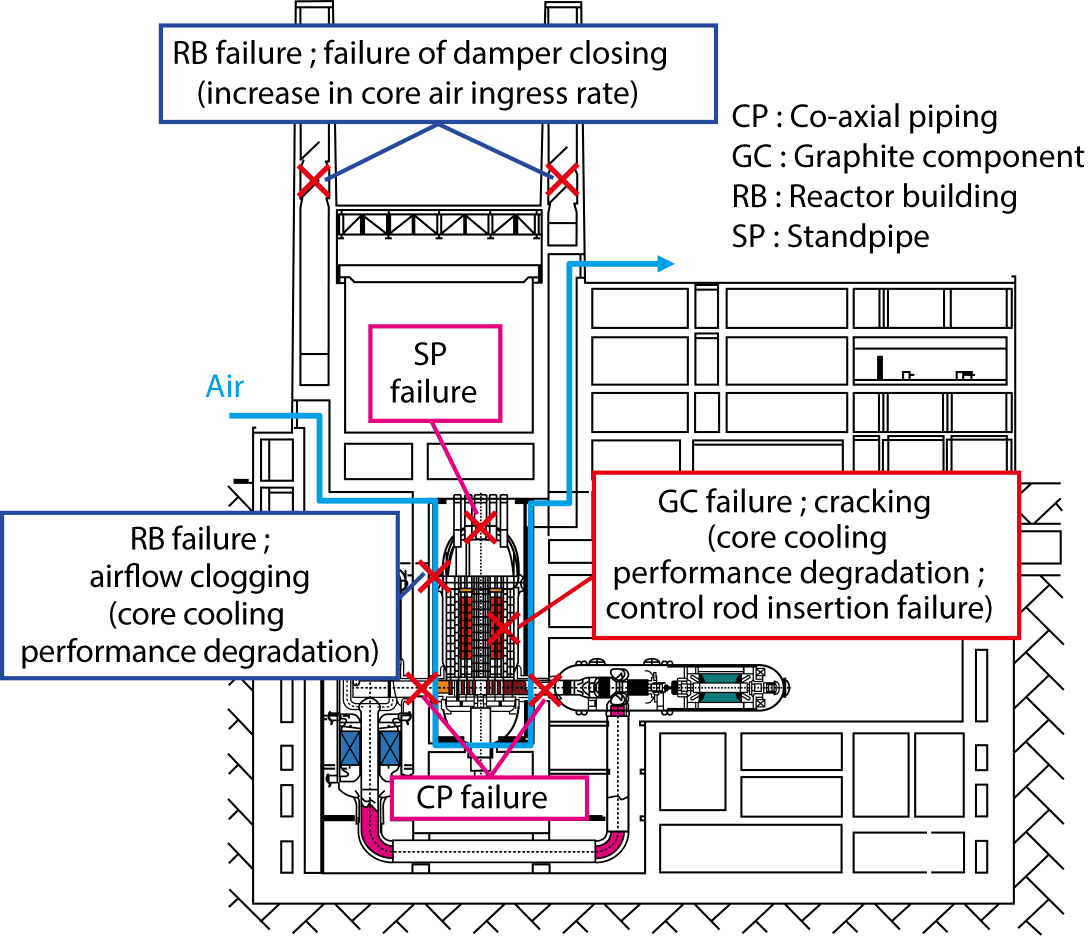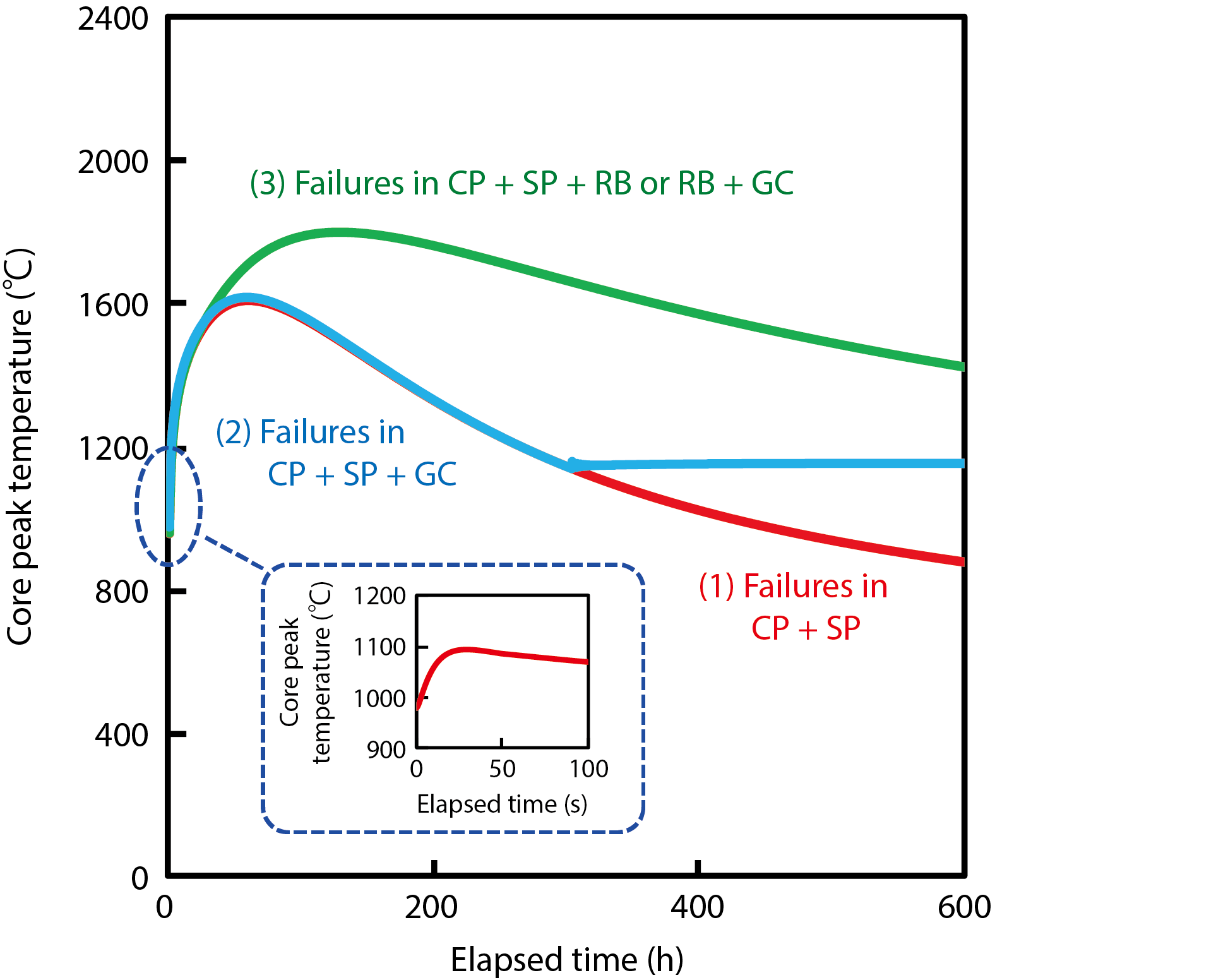
Fig.6-2 The worst accident scenario induced by seismic events

Fig.6-3 Core peak temperature behavior during failures in RB and GC
Towards commercial deployment of High Temperature Gas-cooled Reactor (HTGR), it is necessary to confirm safety for high-consequence, low-probability accidents. To identify the cliff-edge effect, a severely abnormal plant behavior caused by an abrupt transition from one plant status to another following a small deviation in a plant parameter, we investigate the worst accident scenario for public dose at the site boundary.
We select simultaneous failures in the co-axial piping (CP) and the standpipes (SPs), cylindrical structures containing the control rods. This scenario maximizes the air ingress rate into the core. We also assume that the situation is compounded by multiple failures in the reactor building (RB) and graphite component (GC) (Fig.6-2). The control rod floats due to blow down of the reactor coolant through the SP failure points, and air enters the RB because the damper does not close. The flow path inside the RB which is installed for passive reactor cooling is clogged. Subsequent cracking in the graphite components prevents insertion of control rods and degrades the cooling performance of the reactor.
By analyzing the accident progression in the above scenario, we showed that the reactor automatically shuts down for a short duration after the power escalation, limiting the core-temperature increase to below 120 ℃ (Fig.6-3). Initially, the decay heat gradually increases the peak core temperature, but is eventually dissipated into the atmospheric air and/or the earth by thermal conductance and radiation through structures. During several dozens to hundreds of hours after the accident, the peak core temperature monotonically decreases (Fig.6-3(1) and (3)) because the dissipation heat rate exceeds the decay heat generation rate of the core. The peak core temperature never reaches 1900 ℃, the temperature at which the fuel integrity was experimentally confirmed to be maintained, even during an RB failure (3). After the advent of re-criticality, which occurs a few hundred hours after an accident causing a GC failure (2), the summed heat generation rates of decay and the fission reaction balance the core thermal dissipation rate, so the core peak temperature remains constant. The amount of radionuclide released from the top of the RB is the same in each case. On the other hand, the quantity of radionuclide released by RB leakage at the ground level is higher during a RB failure than the case without failure. According to the integrated value of public dose for three-months, the duration to the reactor cold condition, is approximately six times higher for the case with failure (3) than in the case without failure ((1) and (2)) because the high peak core temperature increases the diffusivity of the radionuclides in the fuel coating. However, no cliff-edge effect is observed even in the worst-case scenario.
The present study was a part of result of the “Probabilistic Risk Assessment Method Development for High Temperature Gas-cooled Reactors”, supported by the Ministry of Education, Culture, Sports, Science and Technology (MEXT), Japan.
<Previous: 6 HTGR Hydrogen and Heat Application Research | Next: 6-2>